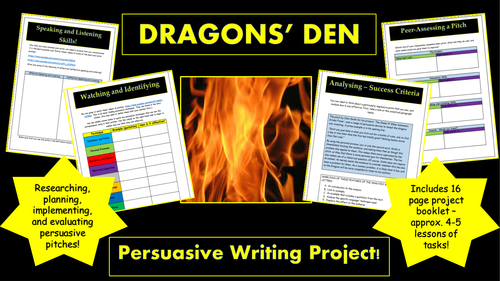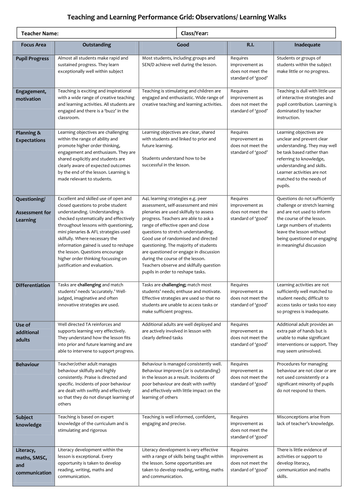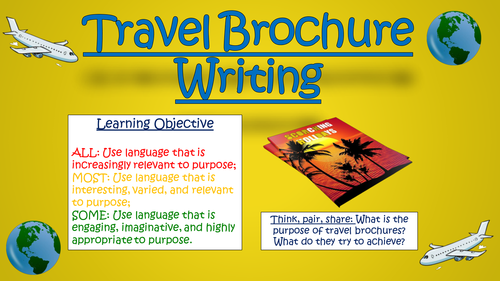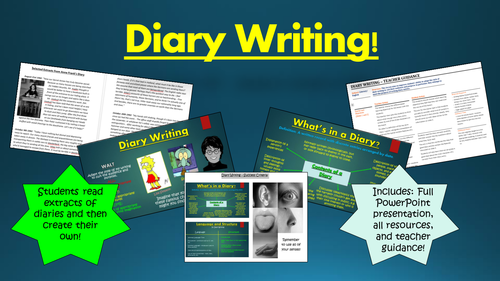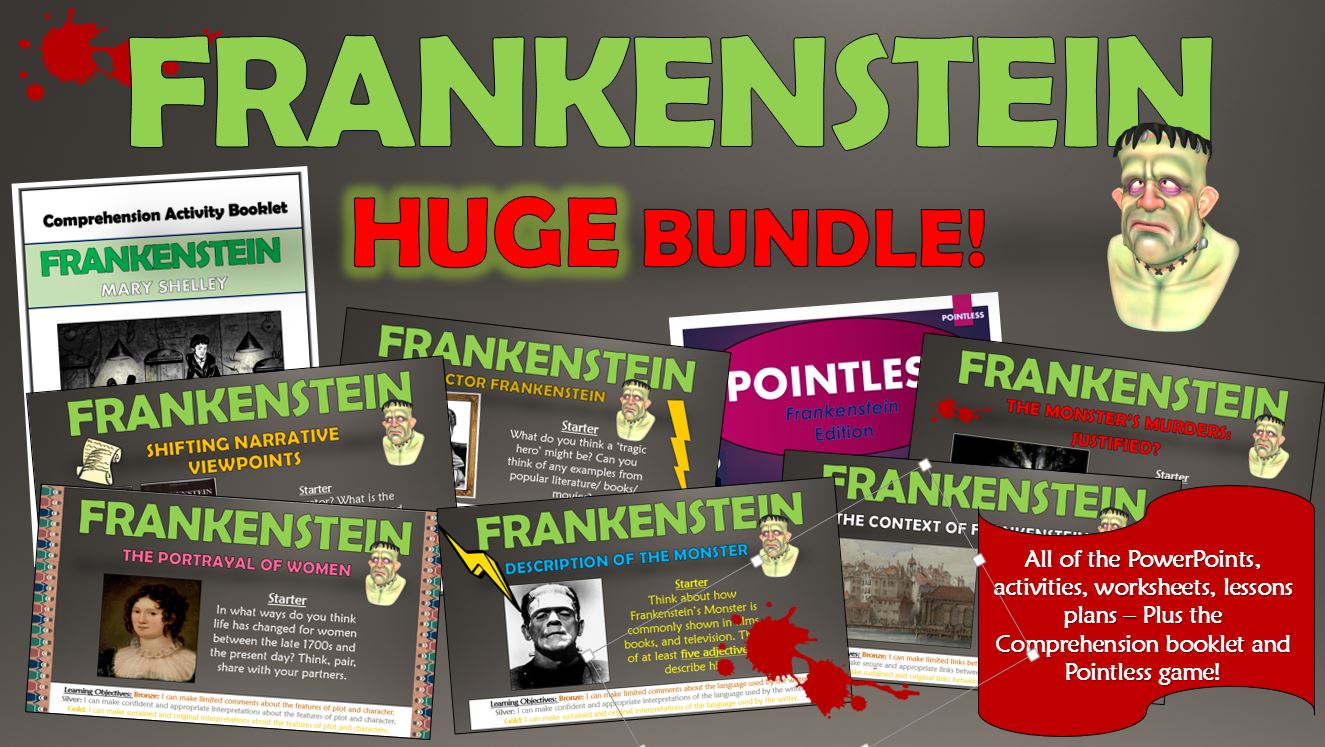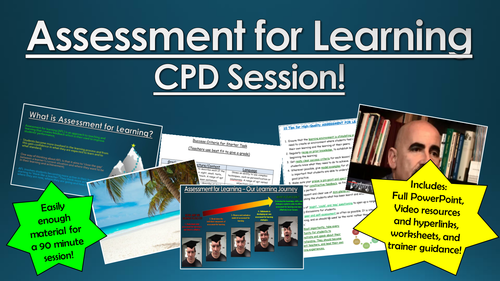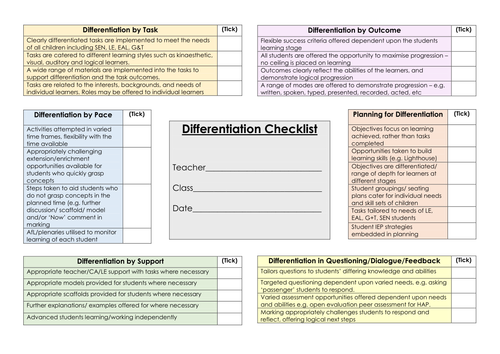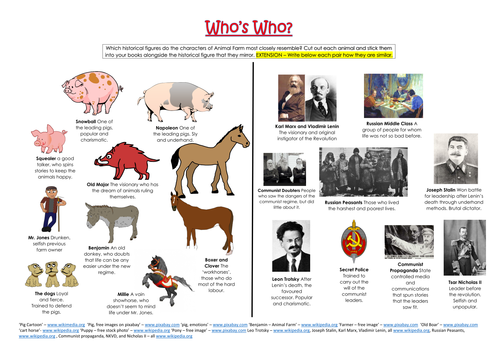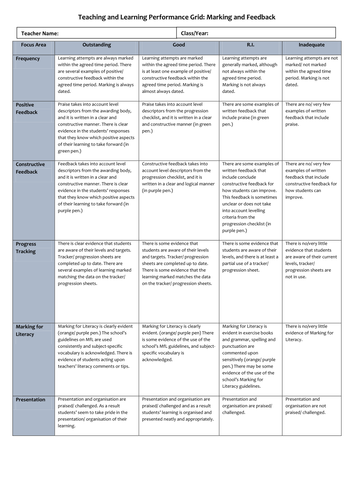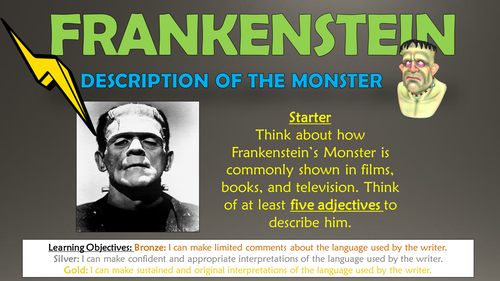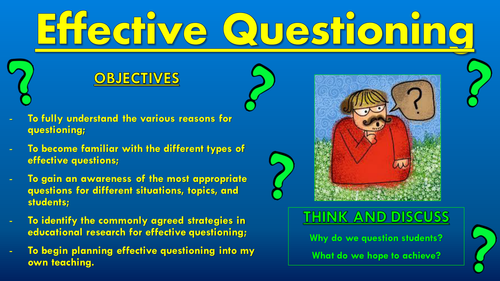
3k+Uploads
1876k+Views
2217k+Downloads
Pedagogy and professional development

Dragons' Den Persuasive Project! (Building Speaking & Listening and Persuasive Writing Skills!)
This resource is perfect for enabling students to build both their persuasive writing and their speaking and listening skills. Based upon the popular BBC series 'Dragons' Den', students have the opportunity to research, design, pitch, and evaluate arguments for their own inventions, whilst simultaneously analysing persuasive pitches, revising persuasive techniques, structuring arguments and articulating convincingly.
Included is a 16 page booklet (I would say at least 4-5 hour lessons of tasks) that lead students to:
- Introduce themselves and their interests;
- Watch persuasive pitches (links included) and identify persuasive devices;
- Analyse why persuasive devices are effective;
- Structure an analysis appropriately;
- Brainstorm ideas for an invention using imagination and helpful aiding questions;
- Formulate an argument by considering key questions and counter arguments;
- Write and present a persuasive pitch;
- Peer-evaluate and self-evaluate persuasive pitches.
I have also provided some examples of news stories featuring the worst and best pitches from the den, in order to provoke discussion about what makes a strong pitch.
All images are licensed for commercial use and are cited throughout.

Observation & Learning Walk Performance Grid
For use alongside lesson observations and learning walks, this succinct performance grid enables observers to gauge and categorise teaching and learning sessions using OFSTED guidance for effective teaching. The first page of the document provides descriptors of 'outstanding', 'good', 'requires improvement' and 'inadequate' teaching within appropriately considered focus areas, for example: Questioning, Planning, Use of Additional Adults, etc. Schools that already employ this tool often opt to highlight the descriptors on this page as they observe, thus creating a bigger picture of the strengths and areas for improvement in the teaching and learning observed. Schools who still grade individual lessons have noted that this is a helpful aid in arriving at an overall judgement. The second page allows observers to further pinpoint and describe the 'www' (what went well) and 'ebi' (even better if) aspects of the lesson, in order to make feedback to teachers more clear.

Behaviour Management CPD Session!
This CPD session offers an engaging and original approach to improving behaviour management practices. Grounded in educational research, this CPD session is interactive, well-structured, and has been successfully tried and tested. The aim of the CPD session is to develop the knowledge, skills, and strategies needed in order to utilise behaviour management even more effectively in lessons, and it achieves this by embarking upon the following learning journey:
1. Fully understanding the various reasons for challenging behaviour;
2. Observing and analysing behaviour management practices through a Youtube video;
3. Evaluating the main behaviour concerns in the participants' school/classrooms
4. Gaining familiarity with a range of research and theory suggesting the best methods and strategies for a number of different challenging situations;
5, Planning effective behaviour management strategies to prevent and combat challenging behaviour in the participants' real-life classrooms.
Included in this pack are: Full PowerPoint presentation, a hyperlinked video for analysis, cards fro the Diamond Nine activity, a top tips helpsheet, instructions for the main group task, and guidance for trainers/ presenters.
All images and videos are licensed for commercial use, and are cited on the final slide.

Celebrating Differences Assembly!
This fun and original assembly aims to assist children in celebrating the differences between themselves and others, through:
-Understanding how diversity is needed in the world;
-Recognising and valuing the differences in their own school;
-Considering how kind words can help us to unite together.
I love leading this assembly, because I feel that the key message within it is so vital, especially in the present climate. More importantly, wherever I have presented this (to a wide-range of students from a wide-range of contexts) it has always gone down extremely well, with students being extremely engaged and informing me of the different ways in which they have celebrated differences in the months that follow!
The slides are visually engaging and well-presented, and the subject matter is tailored to the interests and needs of young people. For example, there are references to Prince Harry, Emma Watson, and others in popular culture, to help engage the children in the idea that each individual has their own strengths, weaknesses, like and dislikes, no matter who they are or how successful they appear.
There is also an exciting ‘toothpaste challenge’ included, which demonstrates the importance of ensuring that our words to others are kind and respectful. The challenge includes a hyperlink to a countdown clock. In addition to this, all other resources that you will need are provided in the pack.
The slides are fairly self-explanatory, but I’ve included guidance notes to assist the speaker. Hope that you find this useful!

New GCSE English Language - Comparing and Contrasting
This informative and engaging double lesson aims to improve students’ ability to compare and contrast two different texts based on a similar subject. They will focus particularly on the purpose, audience, language, and structure of texts, and will learn to use comparing and contrasting connectives to highlight any similarities and differences. This has always been a crucial skill in English, but has an increased importance in the new GCSE for English Language, as there is a greater requirement for students to be able to make links and comparisons between texts.
The lesson follows a clear and logical learning journey, with students learning to:
- Understand the key terms 'compare' and 'contrast', and the importance of these skills in English;
- Categorise the different features that they can compare, under the headings 'Purpose', 'Audience', 'Language' and 'Structure;'
- Read (and identify the key features within) two morally and ethically intriguing texts, offering diverse views of young people in the media;
-Compare the two texts, using a clear and concise template, and newly-acquired knowledge of different types of connectives;
- Peer-assess each other's comparative essay attempts.
Included in this resource pack are:
- Whole double lesson, colourful and engaging PowerPoint presentation (Including assessment for learning referral slides)
- Cards for card-sorting activity;
- Two interesting and thought-provoking non-fiction media extracts (one a newspaper extract from The Evening Standard, and another a persuasive leaflet, both focused on the issue of how young people are perceived.)
- Template for main comparative analysis task;
- Full teacher guidance plan.
All images are licensed for commercial use and are cited on the final slide of the PowerPoint presentation

Travel Brochure Writing!
This engaging and stimulating lesson enables students to create travel brochure texts containing appropriate and imaginative language choices, utilising a range of different language techniques with subtlety in order to craft writing that serves the dual purpose of being descriptive and persuasive. In particular, students learn how descriptive language such as of similes, metaphors, and personification, in addition to persuasive devices such as statistics, rhetorical questions, and personal pronouns, can help to create truly authentic and effective travel brochure pieces.
The lesson follows a clear, logical, bite-size learning journey, which guides students towards differentiated learning objectives. Over the course of this journey, they become able to:
- Define what travel brochures are and understand their purposes;
- Identify the persuasive and descriptive language devices that travel brochure writers employ
- Analyse the effects of the language in a model travel brochure text;
- Utilise a clear and challenging success criteria document in order to construct their own travel brochure pieces;
- Self/Peer assess travel writing attempts.
This resource pack includes:
- A visually engaging whole-lesson PowerPoint presentation;
- An interesting and ambitious travel writing extract (with a highlighted version for teachers):
-A logical and challenging worksheet, encouraging students to analyse key features;
- A detailed lesson plan, complete with what the teacher and students should aim to achieve at each stage of the lesson.
All images are licensed for commercial use, and are cited on the final slide of the PowerPoint.
Bundle Sale

Animal Farm Huge Bundle!
THIS BUNDLE CONTAINS ALL OF THE ANIMAL FARM LESSONS, IN ADDITION TO THE 30-PAGE ANIMAL FARM COMPREHENSION BOOKLET, THE KNOWLEDGE ORGANISER AND THE POINTLESS GAME!
This engaging, varied, and informative scheme of learning is designed to help students gain a valuable understanding of George Orwell’s allegorical novella ‘Animal Farm.’ The lessons enable students to gain a comprehensive understanding of the key features of plot, character, context, and language, in addition to considering the key messages being offered by Orwell.
All of the resources that you need are included in the bundle: informative and engaging whole lesson PowerPoints, worksheets, activities, and lesson plans.
The bundle is made up of a wide-range of interesting and exciting lessons, including:
- The Russian Revolution;
- Old Major’s Dream;
- The Rise of the Pigs;
- Dictatorship;
- Squealer;
- The Ending (Orwell’s Message)
Stimulating, visual, and easily adaptable, these lessons provide suggested learning objectives and outcomes for students of a wide-range of abilities - The vast majority of tasks are differentiated to allow for different abilities and needs in your classroom. Each lesson loosely follows this logical learning journey to ensure that students learn in bite-size steps:
- Engaging
- Defining/ Understanding
- Identifying/Remembering
- Analysing/ Creating
- Peer or self evaluating.
All of the lessons are interactive, employ a variety of different teaching and learning methods and styles, and are visually-engaging.

Diary Writing!
This stimulating and informative lesson aims to improve students’ ability to adapt the style of their writing to suit their audience and purpose. In particular, they attempt to meet the purpose of writing diary entries.
Students follow a clear and logical learning journey, in which they:
-Define diaries and their key content features;
-Read extracts of diaries, and explain which content features different writers employ;
-Work collaboratively to ascertain the language and structure features of diary entries;
-Create a success criteria for effective diary writing (although a ready-made success criteria is included)
-Write a diary entry for a famous character from their favourite movie, using the techniques that they have learnt;
-Peer/self-assess their diary writing attempts.
There are enough resources here really for two lessons, including:
-Visually engaging whole-lesson PowerPoint;
-Diary extracts x 4 (Adian Mole, Anne Frank, etc.)
-What's in a Diary Entry worksheet;
-Success Criteria;
-Step-by-step lesson plan.
All images are licensed for commercial use, and are cited on the final page of the slide.
Bundle Sale

Frankenstein Huge Bundle!
THIS BUNDLE CONTAINS ALL OF THE FRANKENSTEIN LESSONS, PLUS THE 30 PAGE COMPREHENSION BOOKLET, THE KNOWLEDGE ORGANISER AND THE POINTLESS GAME!
This engaging, varied, and informative scheme of learning is designed to help students gain a valuable understanding of Mary Shelley's horror classic 'Frankenstein.' The lessons enable students to gain a comprehensive understanding of the key features of plot, character, context, and language, in addition to considering the key themes and ideas running throughout the text.
All of the resources that you need are included in the bundle: informative and engaging whole lesson PowerPoints, worksheets, activities, and lesson plans.
The bundle is made up of a wide-range of interesting and exciting lessons, including:
- The Context of Frankenstein;
- Victor Frankenstein - The Tragic Hero;
- Shifting Narrative Viewpoints:
- Shelley's Description of the Monster;
- The Monster's Murders - Justified?
- The Frankenstein Pointless Game
- Frankenstein Comprehension Booklet
- Frankenstein Knowledge Organiser
Stimulating, visual, and easily adaptable, these lessons provide suggested learning objectives and outcomes for students of a wide-range of abilities - The vast majority of tasks are differentiated to allow for different abilities and needs in your classroom. Each lesson loosely follows this logical learning journey to ensure that students learn in bite-size steps:
- Engaging
- Defining/ Understanding
- Identifying/Remembering
- Analysing/ Creating
- Peer or self evaluating.
All of the lessons are interactive, employ a variety of different teaching and learning methods and styles, and are visually-engaging.

Assessment for Learning CPD Session!
This CPD session offers an engaging and original approach to introducing or revisiting assessment for learning. Grounded in educational research, this CPD session is interactive, well-structured, and has been successfully tried and tested. The aim of the CPD session is to develop the knowledge, skills, and strategies needed in order to utilise assessment for learning even more effectively in lessons, and it achieves this by embarking upon the following learning journey:
1. Understand what assessment for learning is and why it is effective.
2. Break down the individual components of assessment for learning.
3. Observe and evaluate a model of assessment for learning
4. Collaborate in developing your own assessment for learning strategies.
Included in this pack are: Full PowerPoint presentation, videos for analysis, hyperlinks to Youtube videos, resources for CPD activities, instructions and guidance for trainers/ presenters.
All images and videos are licensed for commercial use, and are cited on the final slide.

Learning Walk/ Teacher Development Checklists
These comprehensive checklists have been created to aid school leaders when performing learning walks with a particular focus e.g. questioning, differentiation, etc. Clearly structured and organised, they present a central idea surrounded by a breakdown of a number of its key components.
For the user, this layout provides a simple reference list of each of the desirable skills, categorised appropriately. The checklists also provide an alternative to regular feedback methods, which often focus too heavily on the standard or ‘judgement’, as opposed to being a developmental tool.
Alternatively, these are really handy for teachers looking to develop their practice in the key teaching areas listed below. Included in the pack are checklists for:
-Questioning
-Differentiation
-Utilising Resources (including support staff)
-Engagement
-Building Literacy Skills
-Planning and Expectations
-Building Learning Power
-A blank template for you to design your own based upon your own focus
Note: The checklists offer a range of desirable strategies that teachers should look to implement over time - it would be damaging to expect teachers to utilise each of these strategies in every lesson!
Many Thanks

Animal Farm: Old Major's Dream and The Revolution!
These resources enable students to understand and analyse the Old Major’s dream and the events of the animal revolution, in the opening two chapters of George Orwell’s Animal Farm. More precisely, students learn to make clear and accurate interpretations about events and characters, with appropriate links to the Orwell’s allegory and relationship to context.
Students learn through the following tasks:
- Gauging and collaborating previous knowledge through a discussion-based starter task;
- Reading the first two chapters and demonstrating their understanding through a related activity sheet;
- Developing their understanding of characters and context through a a making links activity;
- Analysing the allegorical nature of the opening chapters by further exploring the connections between characters and contexts;
- Peer assessing their partners' learning attempts.
The following resources are provided:
- Engaging and colourful step-by-step PowerPoint (includes links for video)
- Teacher lesson guidance/plan;
- Chapters 1 and 2 worksheet;
- Making Links Activity Sheet (1x more difficult, 1 x easier);
- Copies of Chapters 1 and 2.
All images and videos are licensed for commercial use, and are cited on the final slide of the PowerPoint. Note - internet connection is needed if you plan to use the video.
Bundle Sale

Pride and Prejudice Huge Bundle!
THIS BUNDLE CONTAINS ALL OF THE PRIDE AND PREJUDICE LESSONS, IN ADDITION TO THE COMPREHENSION ACTIVITY BOOKLET, THE KNOWLEDGE ORGANISER AND THE POINTLESS GAME!
This engaging, varied, and informative scheme of learning is designed to help students gain understanding, assessment skills, and key interpretations of Jane Austen’s ‘Pride and Prejudice.’ Made up of a wide-range of interesting and exciting lessons, students should complete this scheme having gathered vital skills in: interpreting the significant meanings of the text, understanding the writer’s ideas within the text, analysing key characters, settings, and themes, and understanding Austen’s use of language.
Stimulating, visual, and easily adaptable, these lessons provide suggested learning objectives and outcomes for students of a wide-range of abilities - The vast majority of tasks are differentiated to allow for different abilities and needs in your classroom. Each lesson loosely follows this logical learning journey to ensure that students learn in bite-size steps:
- Engaging
- Defining/ Understanding
- Identifying/Remembering
- Analysing/ Creating
- Peer or self evaluating.
All of the lessons are interactive, employ a variety of different teaching and learning methods and styles, and are visually-engaging. Whole-lesson PowerPoints, activity resources, worksheets, and lesson plans are all provided.
Bundle Sale

Teaching and Learning CPD Bundle!
These teaching and learning CPD sessions offer engaging and original approaches to introducing or revisiting a range of effective pedagogical strategies. Grounded in educational research, these sessions are interactive, well-structured, and have been successfully tried and tested.
The aim of each teaching and learning CPD session is to develop the knowledge, skills, and strategies needed in order to utilise in practice in each key area, and as an aid in achieving these aims, the trainer is supported with:
-Colourful, engaging, and comprehensive PowerPoint presentations;
-Videos for analysis of key techniques;
-A wide range of interactive resources for CPD activities;
-Instructions and plans to assist delivery.
All images and videos are licensed for commercial use, and are cited on the final slide of each PowerPoint.
Bundle Sale

An Inspector Calls Huge Bundle!
THIS HUGE BUNDLE PACK CONTAINS ALL OF THE 'AN INSPECTOR CALLS LESSONS, IN ADDITION TO THE COMPREHENSION BOOKLET, THE KNOWLEDGE ORGANISER, AND THE POINTLESS GAME!
This engaging, varied, and informative scheme of learning is designed to help students gain a valuable understanding of J.B Priestley’s classic play ‘An Inspector Calls.’ The lessons enable students to gain a comprehensive understanding of the key features of plot, character, context, and language, in addition to considering the key messages being offered by Priestley.
All of the resources that you need are included in the bundle: informative and engaging whole lesson PowerPoints, worksheets, activities, and lesson plans.
The bundle is made up of a wide-range of interesting and exciting lessons, including:
- The Context of the Play;
- Arthur Birling;
- Priestley’s Dramatic Devices;
- Sheila and Gerald;
- Sybil and Eric Birling Double Lesson;
- Inspector Goole (Priestley’s message)
- The An Inspector Calls Pointless Game.
- The An Inspector Calls Comprehension Activity Booklet.
Stimulating, visual, and easily adaptable, these lessons provide suggested learning objectives and outcomes for students of a wide-range of abilities - The vast majority of tasks are differentiated to allow for different abilities and needs in your classroom. Each lesson loosely follows this logical learning journey to ensure that students learn in bite-size steps:
- Engaging
- Defining/ Understanding
- Identifying/Remembering
- Analysing/ Creating
- Peer or self evaluating.
All of the lessons are interactive, employ a variety of different teaching and learning methods and styles, and are visually-engaging.

Marking and Feedback Performance Grid
For use alongside book monitoring/ work scrutiny, this succinct performance grid enables observers to gauge and categorise marking and feedback using OFSTED guidance for effective feedback. The first page of the document provides descriptors of 'outstanding', 'good', 'requires improvement' and 'inadequate' feedback within appropriately considered focus areas, for example: Frequency, Constructive Feedback, Marking for Literacy, etc. Schools that already employ this tool often opt to highlight the descriptors on this page as they complete the scrutiny, thus creating a bigger picture of the strengths and areas for improvement in the feedback observed. This can also be a helpful aid in arriving at an overall judgement, should your school opt to arrive at one. The second page allows observers to further pinpoint and describe the 'www' (what went well) and 'ebi' (even better if) aspects of the feedback, to aid teacher in improving their practice.
Bundle Sale

CPD Training Sessions Bundle!
These CPD sessions offer engaging and original approaches to introducing or revisiting a range of effective pedagogical strategies. Grounded in educational research, these sessions are interactive, well-structured, and have been successfully tried and tested.
The aim of each CPD session is to develop the knowledge, skills, and strategies needed in order to utilise in practice in each key area, and as an aid in achieving these aims, the trainer is supported with:
-Colourful, engaging, and comprehensive PowerPoint presentations;
-Videos for analysis of key techniques;
-A wide range of interactive resources for CPD activities;
-Instructions and plans to assist delivery.
All images and videos are licensed for commercial use, and are cited on the final slide of each PowerPoint.

Frankenstein: Shelley's Description of the Monster!
This lesson aims to improve students’ understanding of the descriptive language used to depict the monster in Chapter 5 of Mary Shelley’s horror novel 'Frankenstein.' The lesson places a particular focus upon the descriptive language devices employed by Shelley, in order to create a clear image of the monster’s appearance in the reader's mind, and also to describe Victor’s strong reaction to his creation. By the end of the lesson, students demonstrate an ability to make sustained and original interpretations of the language used by the author.
The lesson follows a step-by-step learning journey, in which children learn through:
- Considering how their preconceptions about the monster have been influenced by modern media and representations;
- Read and understand a key extract from the beginning of chapter 5 - the point at which the monster comes to life;
- Infer and interpret the key developments of the extract, including Frankenstein's changing feelings and the monster's ambiguous actions;
- Identifying and analysing some of the key descriptive devices used by Shelley to create an image of the monster;
- Analysing the effect of the descriptive devices upon the reader;
- Peer assessing each other's learning attempts.
Included is:
- Whole lesson PowerPoint - colourful and substantial; (including an animated Frankenstein's monster to guide them through the lesson);
- Descriptive devices worksheet (and a teacher answer sheet);
- Extract from the beginning of Chapter 5;
- Inferring and Interpreting worksheet;
- Analysis template with success criteria for creating well-structured responses;
- Comprehensive lesson plan.
There are also opportunities for group learning, peer assessment, and whole class discussion. This was originally taught to middle-ability year 9/10 groups, but can easily be differentiated for groups of different ages and abilities.
All images are licensed for commercial use, and image rights are listed on the last page of the presentation.

Effective Questioning CPD Session!
This CPD session offers an engaging and original approach to introducing or revisiting effective questioning. Grounded in educational research, this CPD session is interactive, well-structured, and has been successfully tried and tested. The aim of the CPD session is to develop the knowledge, skills, and strategies needed in order to utilise questioning even more effectively in lessons, and it achieves this by embarking upon the following learning journey:
1. Fully understanding the various reasons for questioning;
2. Gaining familiarity with the different types of effective questions (linking to Bloom's and higher/lower cognitive questioning);
3. Gaining an awareness of the most appropriate questions for different situations, topics, and students;
4. Identifying the commonly agreed strategies in educational research for effective questioning;
5, Planning effective questioning into our own teaching.
Included in this pack are: Full PowerPoint presentation, a video for analysis, resources for CPD activities, a Bloom's helpsheet, instructions and guidance for trainers/ presenters.
All images and videos are licensed for commercial use, and are cited on the final slide.

Social Media Blog Writing Template
This writing resource is perfect for use in literacy/writing lessons across the curriculum. Bright, colourful, and realistic, this resource enriches students' writing experiences whilst enabling them to showcase the skills and knowledge that they have picked up throughout their learning.
This lesson is also available as a part of a larger multi-media writing template bundle from TandLGuru that includes: Facebook page template, email template, messenger template, tabloid template, broadsheet template, and a postcard template. Most are easily editable and visually stimulating for students.

